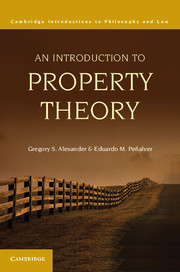8 - Eminent Domain and Regulatory Takings
Published online by Cambridge University Press: 05 June 2012
Summary
One of the most controversial aspects of American property law, and the subject of this chapter, is the government’s authority to expropriate private property through eminent domain. Although the origins of collective expropriations of land for the public good are quite old, in the United States, the eminent domain power originates from the Fifth Amendment of the U.S. Constitution, which provides, in relevant part, “nor shall private property be taken for public use, without just compensation.” This is the so-called takings clause of the federal constitution. It permits government at all levels, federal, state, and local, to expropriate (or condemn) land and other forms of property on two conditions – the expropriation must be for public use and the government must pay just compensation. Although the meaning of just compensation is now well-settled, the precise meanings of take and public use remain the subject of much debate.
The takings clause is also implicated when the government, rather than condemning land, regulates the use of land under police power but does so to an extent that seems tantamount to a confiscation. These so-called regulatory takings have been at the center of some of the most intractable controversies involving the takings clause. As we will see, rival views on these controversies reflect competing underlying theories of the nature of and reasons for private property.
- Type
- Chapter
- Information
- An Introduction to Property Theory , pp. 156 - 182Publisher: Cambridge University PressPrint publication year: 2012
References
- 1
- Cited by

